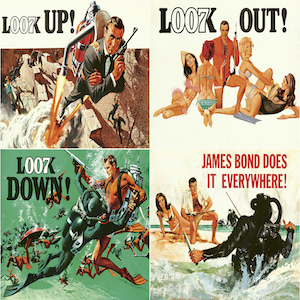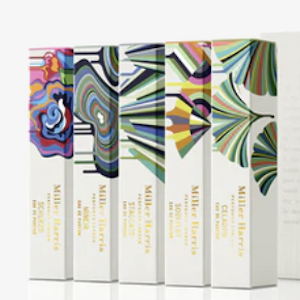Power; Francis and the Mind…
By Alejandra Morganti Pascual
Francis Bacon and the Mind: Art, Neuroscience, and Psychology – Our Short Play.
Your typical teenage poster-ridden bedroom. There are full shelves of books read long ago, dust collecting on them. The evidence of a Zac Efron phase attempted to be covered by National Geographic cutouts, and a print of Rothko’s ‘Orange and Yellow’ is plastered above the double bed.
Occupying the unmade bed is Sophia Demario, 17, she has dark Hispanic skin and full black hair which is put up in a messy bun. She’s lying upside-down, letting her upper body hang off the bed in what looks like a truly uncomfortable position. Her tortoiseshell glasses are askew on her face. On her stomach lays an open school notebook with the words ‘Final Project’ written on the top of the page with several bullet lines of ideas crossed out. Sophia, in a state of desperation, sits up suddenly and the notebook thuds to the ground in unison with her scream of frustration.
The family cat, Picasso, looks up lazily from his spot by her feet, forced to pay attention to his loud human interrupting nap time. Two knobbly hands marked with dry paint grab him. Sophia brings him close up to her face and gently shakes him.
“Why can’t I do this?” she whines. “Can’t you help me?” pouting.
Picasso just stares back at her. His long and limp body hangs in front of her, unamused.
At his silence, Sophia places him back down on the bed, the bell on his blue-collar sounds on impact. He watches her pace the room a couple of times before throwing herself onto the bed in defeat. She switches off the bedside lamp her lack of ideas and creativity, exhausting.
She takes off her glasses, the now dark room becomes familiar dark shapes – except. Sitting on the edge of her bed where Picasso once was there’s a much larger figure of… a man? She scrambles to put on her glasses and frantically switches on the bedside lamp causing it to topple slightly before resting back in place.
The somber orange light illuminates the face of the man sitting there casually, his legs crossed almost as if bored. It’s Francis Bacon. He’s sitting in a grey suit, cuff links gleaming. There’s nothing out of the ordinary about his appearance except for what appears to be a blue cats collar around his neck, the name ‘Picasso’ engraved on the metal plate.
Sophia immediately screams. This must be an exhaustion-induced dream.
Francis finally turns his head towards her in response to her scream as if just noticing her presence. The bell attached to the cat’s collar rings with the movement.
“Oh please don’t do that.” he drawls, uncrossing and crossing his other leg.
Sophia stops screaming but her mouth hangs open in shock. They hold eye contact for what feels like minutes in silence. He gives her a moment, waiting for a reaction beyond this stalemate of disbelief. Finally, he says, “Is that Rothko? Puh-lease.” he blows air out of his mouth dismissively.
Sophia looks behind her at the print hanging above her bed. But Francis continues, “I mean the man named his creations after the colours used. A bit of imagination, Mark.” He shakes his head before resting his eyes on Sophia. “So?”
Sophia stares back, her mind still reeling from the sudden apparition of the world-renowned British figurative painter sitting on her bed wearing her family cats collar.
“I don’t even know where to begin.” she says.
“That’s because you’re not asking the right questions,” he answers, an air of mystery about him. Something amongst the eclectic array of disregarded items on the bedroom floor catches his attention.
“Ah, this must be it. The why.” exclaims Francis.
“The why?” says Sophia. Francis picks up the notebook she’d thrown earlier in frustration.
“The why I’m here.” He replies matter of factly.
“My A-Level Coursework?” she asks incredulously.
“That right,” he grins at her madly “you need some Bacon in your life!”
Sophia’s forehead crinkles at the thought. Then says, “Actually, I’m trying to be a vegetarian at the-’’
Francis rolls his eyes, tossing the notebook back at her. “Some Francis Bacon in your life. In your artistic life anyway.” He scans the room again as he mutters under his breath “Especially if your chosen decoration is anything to go by.”
Sophia guffaws at this. “What’s wrong with Rothko? Monet?” She shakes her head as if shaking these impure thoughts. “Who talks about themselves in the first person, anyway?”
Francis sits up straighter, the cat collar ringing again. “All I’m saying So-ppphia,” he mocks playfully “Is that you need to connect your brain,” pointing at his head, “to your body.” his same finger points to his chest.
She sits up straighter on the bed, running her hand through the loose strands fallen from her bun. “I still don’t-’’ she begins to say, but Francis is on a roll. The bell on the cat collar rings as he springs up from the bed.
He starts to pace back and forward in the small space, all the while excitedly spouting, “Sophia, the mind, the brain. It’s our greatest tool! It’s a marvellous catalyst to everything we’ve ever done or will think of doing.”
He comes up close to her face, his eyes as large as plates trying to convey his life-changing advice.
“There’s a large system of nerves that link to the brain and spinal cord. It is full of sensory receptors, which process changes in internal and external stimuli and communicate that information to the central nervous system.”
“That sounds like science.” deadpans Sophia, disgruntled at the thought. “I hate science.”
“It’s neuroscience, it’s the rock and roll of all sciences.” He exclaims once again pacing the room, gesticulating wildly.
“I also hate rock and roll.”
Francis comes to a sudden stop, his arms coming down to rest defeated at his side. “Oh, you’re a teenager, you hate everything.”
Sophia laughs in disbelief. But soon that laughter turns into a fit that takes over her body like a fever, ravishing her. The night’s events catch up to her. She looks at Francis Bacon staring back at her in his fancy suit, Picasso’s collar around his neck. She’s laughing so hard her glasses fall down her nose. She snorts. Francis smirks at this, and soon the smirks turned into a full-blown face-splitting smile and they’re both laughing maniacally.
Finally, their laughter subsides, Sophia wiping a tear from the corner of her eye.
In the moment of quiet Francis speaks out, “I’m just trying to help you, you know.”
Sophia smiles at the sincerity. “You’ve already helped me. So much.” She gets up from the bed and grabs her school bag. It’s spattered in dry paint and there’s a peeling sticker of the female gender sign smack in the middle. She reaches into the bag and pulls out a large white book. It’s quite worn and there’s a litter of neon yellow and pink sticky notes peeking out the top of the closed pages.
Sophia sits down next to Francis, the book in hand. The title reads Francis Bacon and the Mind: Art, Neuroscience, and Psychology.
• • •
Figure at a Washbasin, 1976 © The Estate of Francis Bacon. All rights reserved. DACS 2019
Francis Bacon is one of the most enigmatic British artists of modern history. The raw imagery of his work evoked both horror and delight (at times, simultaneously). Obsessed with self depiction and understanding his own motivations, Bacon created unique and sensory paintings, inspired by art movements such as Cubism and of course the Godfather of Cubism, Pablo Picasso. Just as cubists depicted every side of an object or person, Bacon depicted both inside his body and the internal struggle known as ‘the wound’, and how it affected the external.
Celebrated recently at the official launch hosted by the Royal Academy of Arts, Francis Bacon and the Mind: Art, Neuroscience, and Psychology is the first book to be published by The Estate of Francis Bacon publishing in association with Thames & Hudson with an insight to the British painter in the form of an analytical study.
Head I, 1948 © The Estate of Francis Bacon. All rights reserved. DACS 2019
Five writers for five essays, Christopher Bucklow, Steven Jaron, Darian Leader, John Onians, Semir Zeki and Tomohiro ICI. Previously Semir Zeki’s essay was only available online, this is the first time it has been published.
Alongside the essays are some of Bacon’s most visceral paintings. This book is a must-read for all art lovers interested in the sometimes wild but always brilliant workings of an artists mind. An inside and outside, if you like, of him and his work.
‘The first book in Francis Bacon Studies, a series that seeks
to illuminate Francis Bacon’s art and motivation.’
‘Francis Bacon and the Mind: Art, Neuroscience, and Psychology’ Thames and Hudson Here
Edited by Martin Harrison
Essays by Christopher Bucklow, Steven Jaron,
Darian Leader, John Onians,
Semir Zeki and Tomohiro ICI








